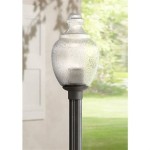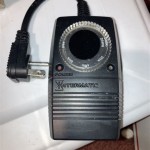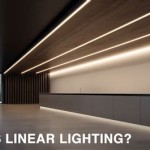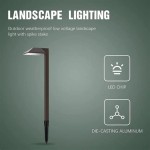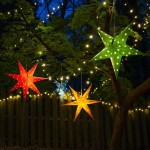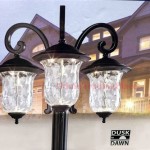The Standard Color Temperature for Outdoor Lighting
Outdoor lighting plays a crucial role in enhancing safety, security, and aesthetics. However, choosing the right color temperature for outdoor lights can be a challenging task, as it significantly impacts the overall ambiance and functionality of the space. Color temperature, measured in Kelvin (K), determines the warmth or coolness of the light emitted. A higher Kelvin value indicates a cooler, bluer light, while a lower Kelvin value signifies a warmer, yellower light. This article delves into the standard color temperatures used for various outdoor lighting applications, providing insights into the factors influencing the choice of color temperature.
Understanding Color Temperature
Color temperature is a concept derived from the hypothetical temperature of a blackbody radiator. As the blackbody heats up, it emits light of different colors, ranging from deep red at low temperatures to bright blue at high temperatures. This concept forms the basis for the Kelvin scale, which quantifies the color of light emitted by a light source. While not a direct measure of heat, Kelvin values are used to describe the perceived color warmth or coolness of the light.
For instance, a light source with a color temperature of 2700K emits a warm, yellowish light similar to incandescent bulbs, often used for creating cozy and inviting atmospheres. Conversely, a light source with a color temperature of 6500K emits a cool, bluish-white light that resembles daylight, commonly used for tasks requiring clear visibility.
Common Color Temperatures for Outdoor Lighting
The chosen color temperature for outdoor lighting depends on several factors, including the intended purpose, surrounding environment, and personal preferences. Here are some common color temperature ranges for different outdoor lighting applications:
Warm White (2700-3000K)
Warm white lights create a cozy and welcoming ambiance, often used in residential settings to enhance curb appeal and highlight architectural features. They are particularly effective for illuminating pathways, patios, and gardens, creating a relaxing and inviting atmosphere. Warm white light can also be used for accent lighting on trees and landscaping, adding a touch of elegance to the outdoor space.
Neutral White (3500-4000K)
Neutral white lights strike a balance between warm and cool tones, offering a clean and crisp appearance. They are commonly used for security lighting, as they provide good visibility without being overly harsh or intrusive. Neutral white lights can be effectively used for illuminating parking lots, sidewalks, and streetlights, enhancing safety and providing clear visibility.
Cool White (4100-4500K)
Cool white lights emit a more bluish-white light, often used for tasks requiring high visibility. They are ideal for illuminating working areas, sports fields, and commercial spaces where clear vision is paramount. Cool white light can also be used for accent lighting on architectural elements, adding a modern and sophisticated touch to the outdoor space.
Daylight (5000-6500K)
Daylight lights mimic the natural color of sunlight, providing a clear and vibrant light similar to the outdoors. They are widely used for commercial and industrial applications, where accurate color rendering is crucial. Daylight lights can also be used for illuminating outdoor work areas, ensuring clear visibility for tasks requiring precision.
Factors Influencing Color Temperature Choice
Several factors influence the choice of color temperature for outdoor lighting. These factors include:
Purpose of Lighting
The intended purpose of the lighting plays a crucial role in determining the appropriate color temperature. For example, security lighting often favors cooler white lights for better visibility, while residential lighting may opt for warmer white lights for a cozy atmosphere.
Surrounding Environment
The surrounding environment can also influence color temperature choice. For instance, lighting in a densely populated area may benefit from cooler white lights to counteract the ambient light pollution, while a secluded garden might favor warmer white lights to create a tranquil ambiance.
Personal Preferences
Ultimately, personal preferences play a significant role in choosing the optimal color temperature. While certain color temperatures may enhance certain aspects of outdoor lighting, the final decision often boils down to individual aesthetic preferences.

Choose The Best Color Temperature For Your Outdoor Lighting Knowledge Base Super Bright Leds

Choose The Best Color Temperature For Your Outdoor Lighting Knowledge Base Super Bright Leds

Best Color Temperature For Outdoor Lighting Enhanced

What Is The Best Led Color Temperature For Outdoor Lighting

What Is Cct Ivins Night Sky

Color Of Outdoor Light Lighting Concepts Guide Interior

Understanding Kelvin And Led Light Color Temperatures

The Difference Between Led Color Temperatures Spot
Led Bulb Color Temperature Guide

Kelvin Color Temperatures
Related Posts

